#On the Waterfront 1954
Explore tagged Tumblr posts
Text


A FACE THAT READS LIKE A MAP OF NEVER-ENDING CONFLICT, FRUSTRATION, AND DISTRESS.
PIC INFO: Spotlight on Criterion booklet artwork of Marlon Brando as Terry Malloy, low-level dockworker, failed prizefighter, and pawn in a wharf-side racketeering operation in the American drama film "On the Waterfront" (1954), directed by Elia Kazan.
Artwork by Sean Phillips. Design/art direction by Eric Skillman.
"When he [Marlon] plays those scenes with her, I'm broken up. I break up. That one person should need so much from another person in the way of tenderness and all that. We all do, don't we?"
-- ELIA KAZAN, interviewed by Richard Schickel (quote lifted from the Criterion Collection supplemental DVD booklet)
Sources: http://theartofseanphillips.blogspot.com/2012/11/on-waterfront.html & Facebook (an old post of mine).
#On the Waterfront 1954#Marlon Brando#Art Print#50s Movies#50s Cinema#50s#Brando#Eric Skillman#American Style#Vintage Illustration#Classic Hollywood#On the Waterfront 1954 Movie#1950s#Criterion#Cinema#Criterion Collection#Sean Phillips#Illustration#Elia Kazan#Sean Phillips Art#On the Waterfront#Graphic Design#Old Hollywood#1954
11 notes
·
View notes
Text















Vulture was my only source to present an upset for 1954, so after careful consideration of the other nominees I have chosen to agree with them!
On the Waterfront may not have been close to being a top-grossing film in 1954, but it clearly made an impact. Kazan morphs the relatively simple plot into such a timeless, sophisticated production. The cast all deliver flawless performances, especially (my favorite lesbian icon) Marlon Brando. What's not to like?
The connection to "Going My Way" was also hilarious. I'm not sure I can see it, but whatever!
The Caine Mutiny was the next closest upset I could find for this year. It was the second highest grossing film in the US in 1954 (behind White Christmas, a personal holiday fav), has relatively high current reception, and lost big during the awards season. Both were distributed by Columbia and had strong, recognizable casts.
As with most movies adapted from novels, Edward Dmytryk apparently felt that The Caine Mutiny could have been more successful if it was allowed nearly double the amount of screen time. Even so, I felt that it was extremely slow to get started, with little action occurring prior to the half-way point. Overall, still a solid film.
I also added a couple of slides that I found from different issues of Variety complaining about the possible effects of home televisions on the movie industry! Don't worry Variety, it's 2024 and we're still having this discussion.
Marlon Brando went into the 27th Academy Awards with three consecutive Best Actor nominations and finally left with a win for On the Waterfront. Most notably, Brando beat out Humphrey Bogart, who won against Brando during his first nom in 1951. Brando also took home a Golden Globe, a NYFCC award, and a BAFTA for his performance.
An impressive 5 acting nominations from On the Waterfront follows a strange trend with 1950s Winners - 3 of the 5 Winners from the decade so far have had 5 acting nominations.
The Caine Mutiny walked away from practically every awards show of the year empty handed.
Both films see above average current reception compared to other winners and upsets, except for The Caine Mutiny's uncharacteristically low Metascore. Not sure what that's about.
On the Waterfront was listed as #8 on the 1998 AFI list and #19 on the 2007 list. A line from Marlon Brando is also ranked #3 on the AFI's 100 Movie Quotes list. The Caine Mutiny was a box office hit, but failed to live up to On the Waterfront both in 1954 and now.
Unofficial Review: Definitely not an upset. Plus, I don't think the Oscars could handle having two Best Picture winners about mutinies, let alone a mutiny involving the U.S. Navy.
Both can be found free on archive.org.
#oscars#academy awards#27th academy awards#on the waterfront#on the waterfront 1954#the caine mutiny#the caine mutiny 1954#1950s#film#1950s film#oscarupsets
1 note
·
View note
Text

Marlon Brando and Eva Marie Saint on the set of On The Waterfront - 1954
#marlon brando#eva marie saint#on the waterfront#1954#hollywood#old hollywood#classic hollywood#classic movies#old movies#on the set
106 notes
·
View notes
Text

Elia Kazan’s “On the Waterfront” July 28, 1954.
4 notes
·
View notes
Text























From the Golden Age of Television
Series Premiere
Waterfront - The Skipper's Day - Syndicated - August 21, 1954
Drama
Running Time: 30 minutes
Written by M. Bernard Fox and Jesse L. Lasky Jr.
Produced by M. Bernard Fox
Directed by John Brahm
Stars:
Preston Foster as Captain John Herrick
Lois Moran as May "Mom" Herrick
Kathleen Crowley as Terry Van Buren
Douglas Dick as Carl Herrick
Carl Betz as Dave Herrick
Frank Wilcox as Hank Van Buren
Frieda Inescort as Emily Van Buren
Willie Best as Bill Slocum
George Chandler as Mac Benson
Pinky Tomlin as Tip Hubbard
Jim Hayward as Ward Cowling
Jack Elam as Britt
Lee Van Cleef as Ed
Sanders Clark as Butler
Molly Glessing as Maid
Voltaire Perkins as Ship's Captain
#The Skipper's Day#Waterfront#TV#1950's#1954#Drama#Syndicated#Preston Foster#Lois Moran#Kathleen Crowley#Douglas Dick#Carl Betz#Frank Wilcox#Frieda Inescort#Willie Best#George Chandler#Jack Elam#Lee Van Cleef#Series Premiere
3 notes
·
View notes
Text
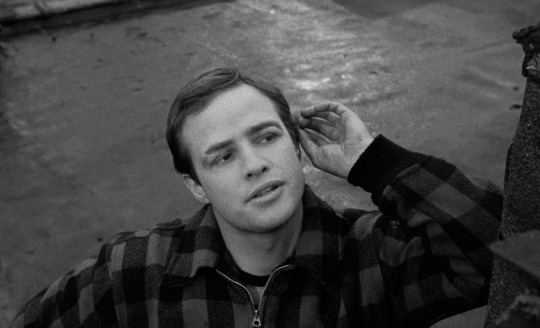
On the Waterfront (1954).
#On the Waterfront#Marlon Brando#1950s#50s movies#1954 movies#Elia Kazan#old hollywood#classic hollywood#screencaps#screenshots#movie stills#movie screencaps#movie screenshots#random screenshots#50's movies#1950's
11 notes
·
View notes
Text
Best Eva Marie Saint movies and performances:
1. North by Northwest - Alfred Hitchcock (1959)
2. On the Waterfront - Elia Kazan (1954)

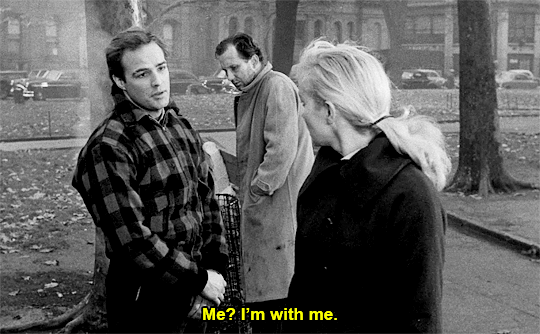
#eva marie saint#north by northwest#on the waterfront#alfred hitchcock#elia kazan#1959#1954#50s#1950s#1950s movies#50s movies#spy film#crime film#thriller film#budd schulberg#cary grant#marlon brando#james mason#karl malden#Ernest Lehman#lee j cobb#bernard herrmann#rod steiger#saul bass#Pat Henning#kinetic typography#leonard bernstein#List of films considered the best#Malcolm Johnson#national film registry
5 notes
·
View notes
Text
youtube
die süßesten früchte, franz antel 1954
#die süßesten früchte#franz antel#1954#tutti frutti#rtl#strohfeuer#1984#on the waterfront#the great dictator#les hommes protégés#las hurdes#juarez#evita
0 notes
Text
On the Waterfront (1954)
A dockworker with a shady boss is pressured into testifying against his crimes but doing so would alienate him from the community.
There’s a good deal of engaging subtext so it’s no wonder the critics gave it acclaim. There’s debate around whether it casts suspicion on Communist practices due to how unions can be abused or if the commentary is judging Capitalism for rigging a system with so many opportunity to exploit workers. Either way the social realism is great for expressing the negotiation through subject matter that was highly controversial at the time.
Even though the love story was fairly crucial to the story, it’s presentation was unhealthy but the narrative framed it as inevitable so it wasn’t to hard to accept regardless of the poor fit. It was odd that the voice of reason, speaking out against hypocrisy, was a priest especially when few of the other characters show any spiritual inclination.
The acting was all consistently strong, the lead in particular had the opportunity to demonstrate a range of emotions with subtlety. The film also effectively developed the protagonist by showing the changeable attitudes of the personal community, the work system at large, as well as that of the criminals; the only notable absence was any real law aside from the odd scene in which the police behave much like the gang members.
Although there was a resolution by the end, several things were left open-ended. For example the resolution applies mainly to work and rather than whether he made up with his girlfriend or the neighbour boy. It also leaves a vacuum in the local power structure waiting for another tyrant to fill it. Even the henchmen are still free and available.
4/10 -It’s below average, but only just!-
-The gloves Edie wears throughout the film and a reference to her being raised by nuns is a subtle suggestion that she’s a virgin, it also reflects Terry’s naivety when he tries one on.
-The German title for the film is “Die Faust im Nacken” or “The Fist in the Neck”.
-The director was heavily criticised at the time, and in retrospect, for informing to the US government on other alleged Communists.
0 notes
Text

'On the Waterfront' - 1954
439 notes
·
View notes
Text

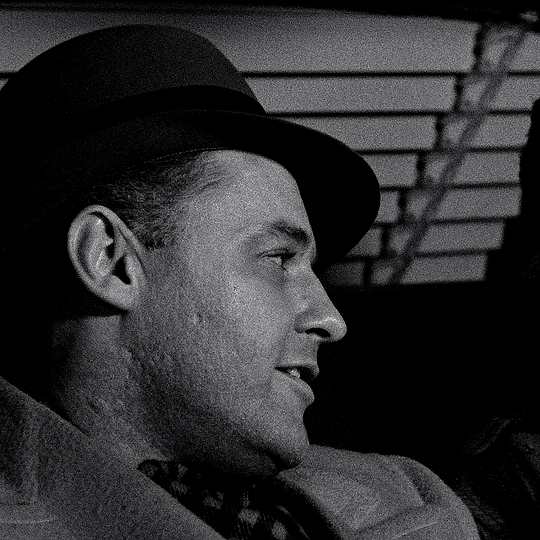

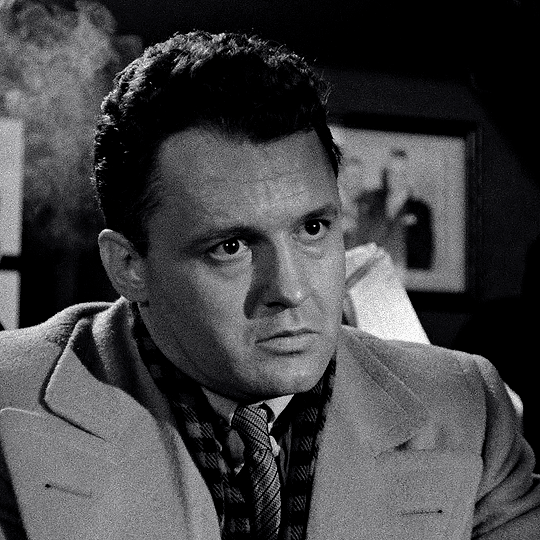
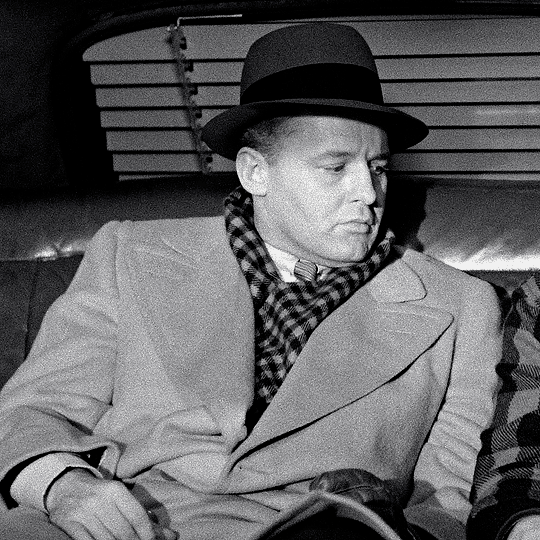
Rod Steiger in ON THE WATERFRONT 1954 | Elia Kazan
#on the waterfront#1950s#drama#thriller#gif#helen#filmedit#usermichi#userelissa#henricavyll#classicfilmblr#oldhollywoodedit#userfilm#dailyflicks#rod steiger
283 notes
·
View notes
Text
Marlon Brando
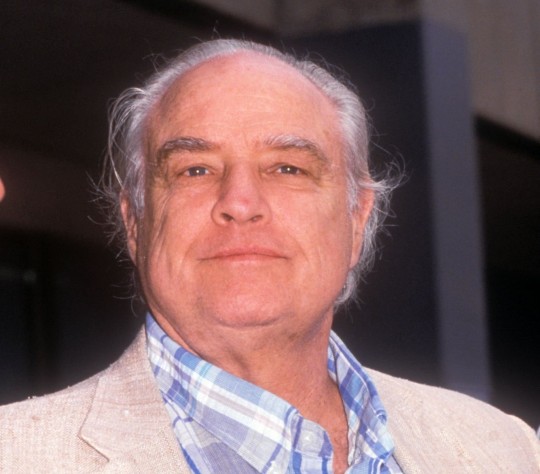
Physique: Heavyset Build Height: 5′ 8¾″ (1.75 m)
Marlon Brando Jr. (April 3, 1924 – July 1, 2004; aged 80) was an American actor and activist. Widely considered one of the greatest and most influential actors of all time, he received numerous accolades throughout his career, which spanned six decades, including two Academy Awards, two Golden Globe Awards, one Cannes Film Festival Award, and three British Academy Film Awards. Brando is credited with being one of the first actors to bring the Stanislavski system of acting and method acting to mainstream audiences.

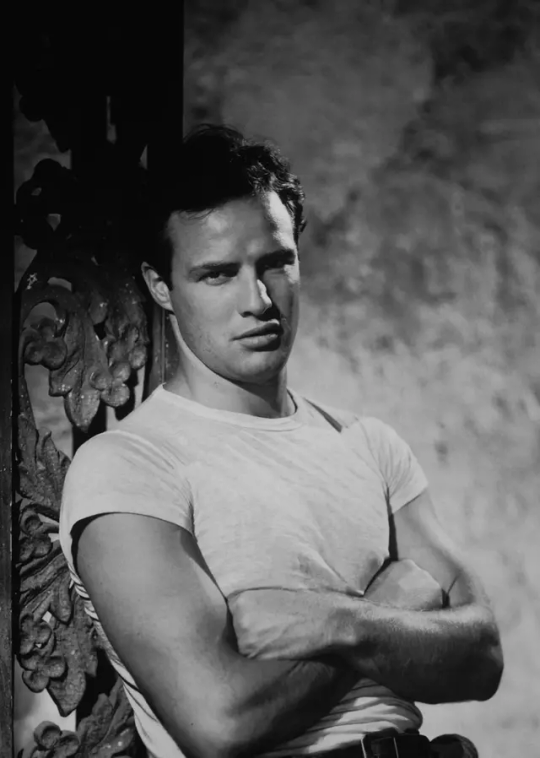
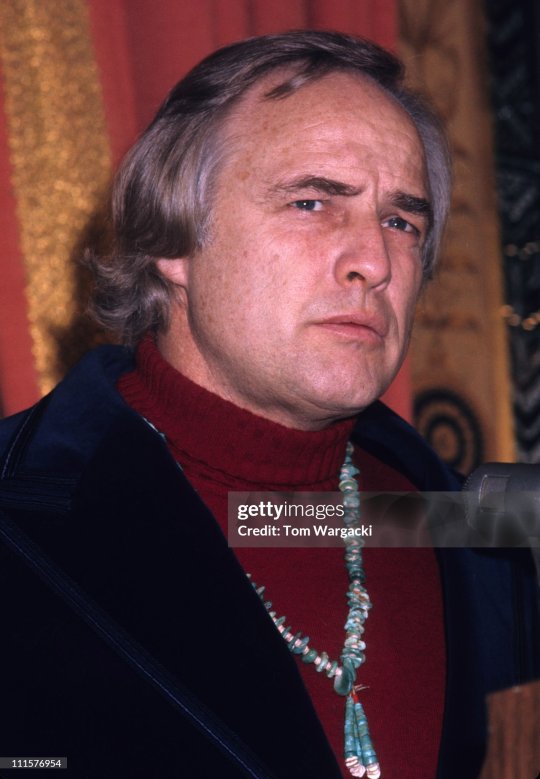
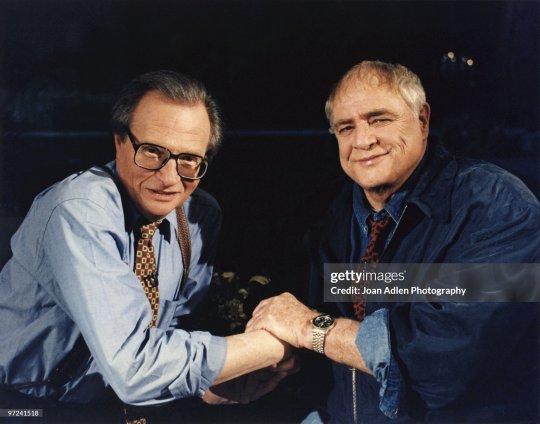

In his youth Brando was an electrifyingly handsome and talented star. By the time I took notice of him, he weighed well over 300 pounds but still a handsome and talented star with some men and women still wanting to tap that. Brando's notoriety, his troubled family life, and his obesity attracted more attention than his late acting career.
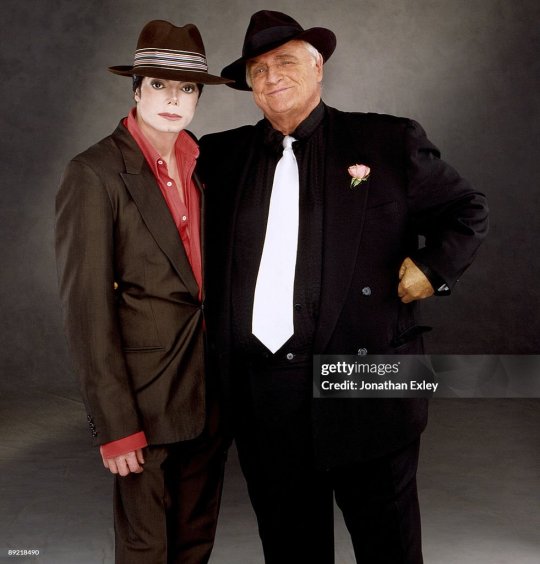
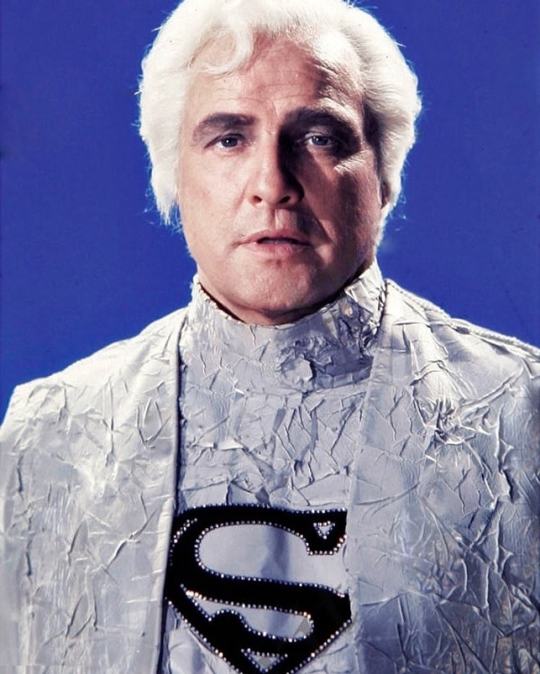
Married three times, Brando was bisexual and possessed of a voracious libido and there were plenty experiences to report. He was the father to at least 11 children, three of whom were adopted. Among his partners were Burt Lancaster, Laurence Olivier, Tyrone Power, Montgomery Clift, James Dean and Rock Hudson. Hell. He even tapped Paul Newman. With all that, I wonder if he was pitching or catching. Who am I kidding. Brando was a top all the way. Having a balanced diet, his conquests also included Marilyn Monroe, Marlene Dietrich, Grace Kelly, Shelley Winters, Ava Gardner, Hedy Lamarr, Ingrid Bergman, Edith Piaf and Doris Duke (the world’s richest woman at the time). And he had a bizarre, intimate relationship with actor Wally Cox that would last a lifetime.

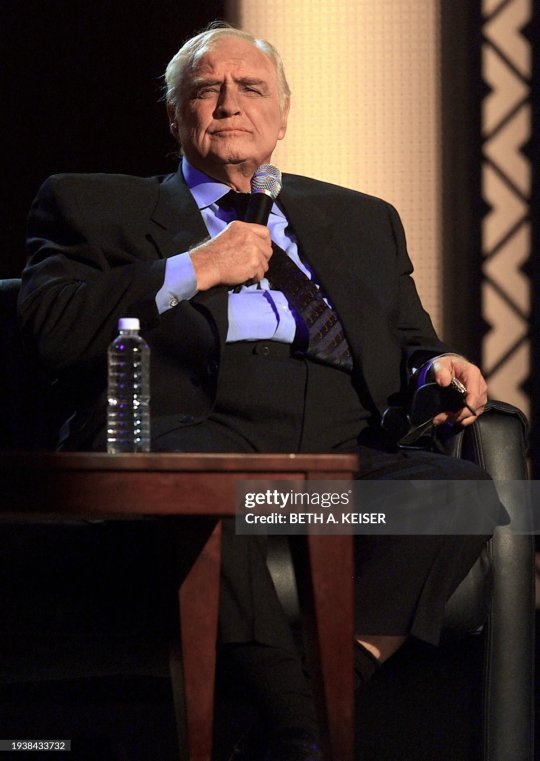
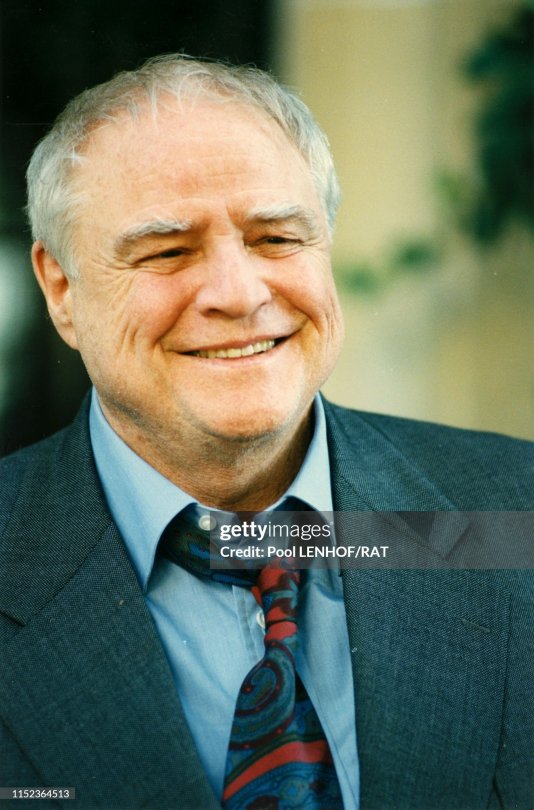
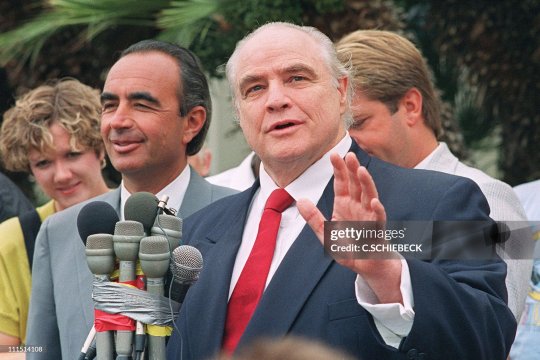
The last two decades of Brando's life were marked with controversy, and his troubled private life received significant attention. He struggled with mood disorders and legal issues. Brando continues to be respected and held in high regard. On July 1, 2004, Brando died of respiratory failure from pulmonary fibrosis with congestive heart failure at the UCLA Medical Center. Brando was cremated and his ashes were put in with those of Wally Cox. They were then scattered partly in Tahiti and partly in Death Valley.
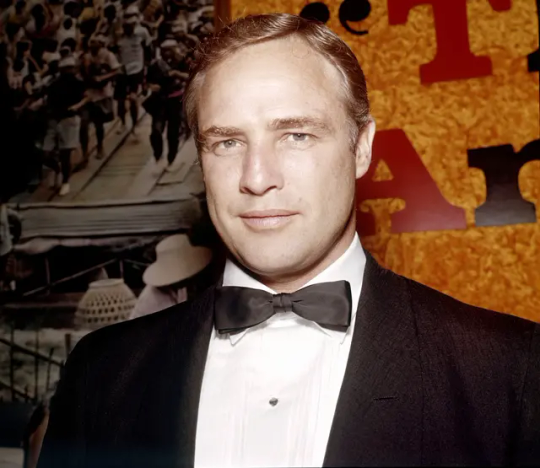
RECOMMENDATIONS: Don Juan DeMarco (1994) Apocalypse Now (1979) Superman (1978) Last Tango in Paris (1972) The Godfather (1972) Mutiny on the Bounty (1962) One-Eyed Jacks (1961) On the Waterfront (1954) A Streetcar Named Desire (1951)
55 notes
·
View notes
Text

Cartel película "La ley del silencio" (On the waterfront) 1954, de Elia Kazan.
8 notes
·
View notes
Text
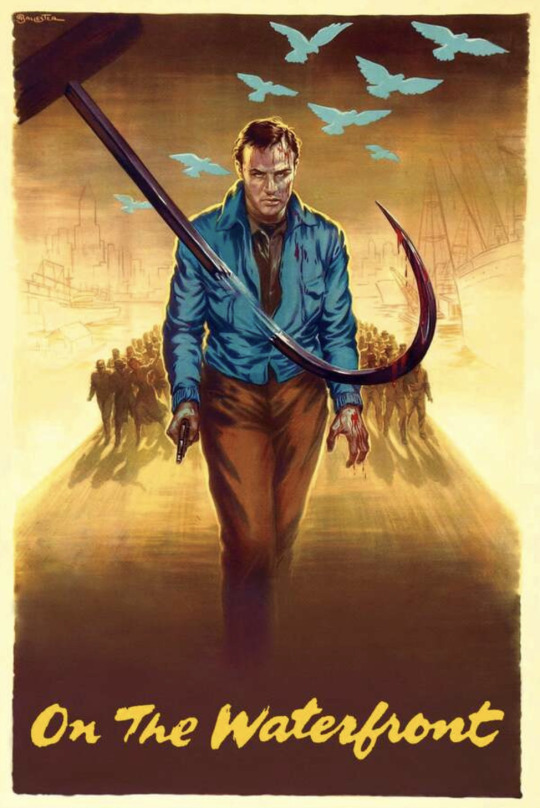
#movies#polls#on the waterfront#50s movies#elia kazan#marlon brando#old hollywood#have you seen this movie poll
58 notes
·
View notes
Text
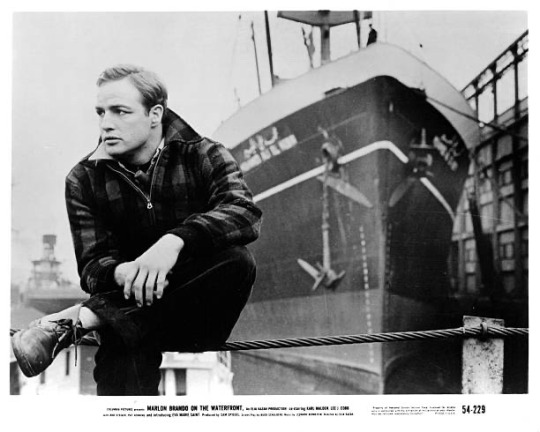



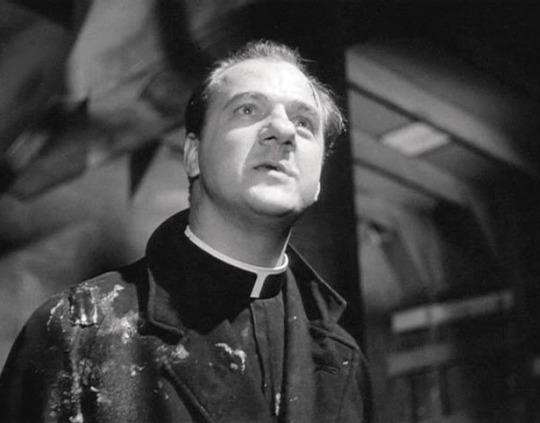
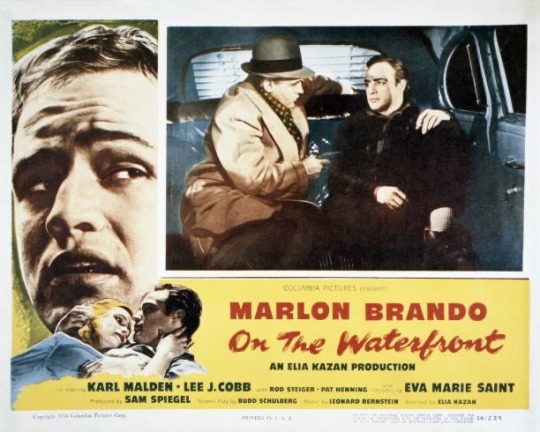
Elia Kazan’s ON THE WATERFRONT premiered in New York City #OnThisDay in 1954.
56 notes
·
View notes
